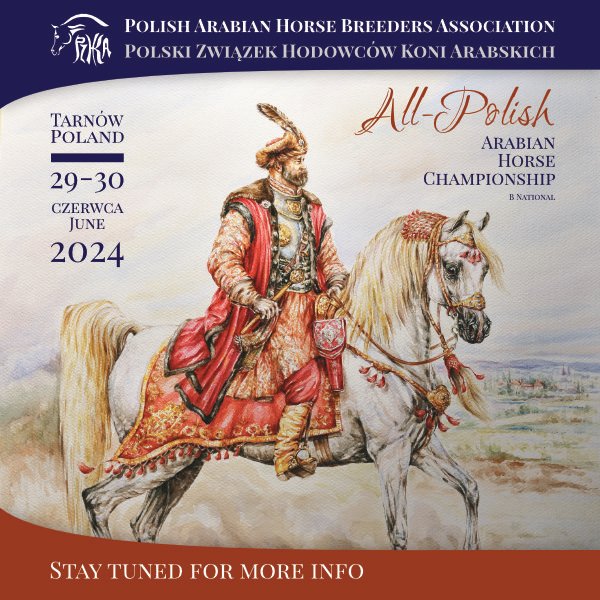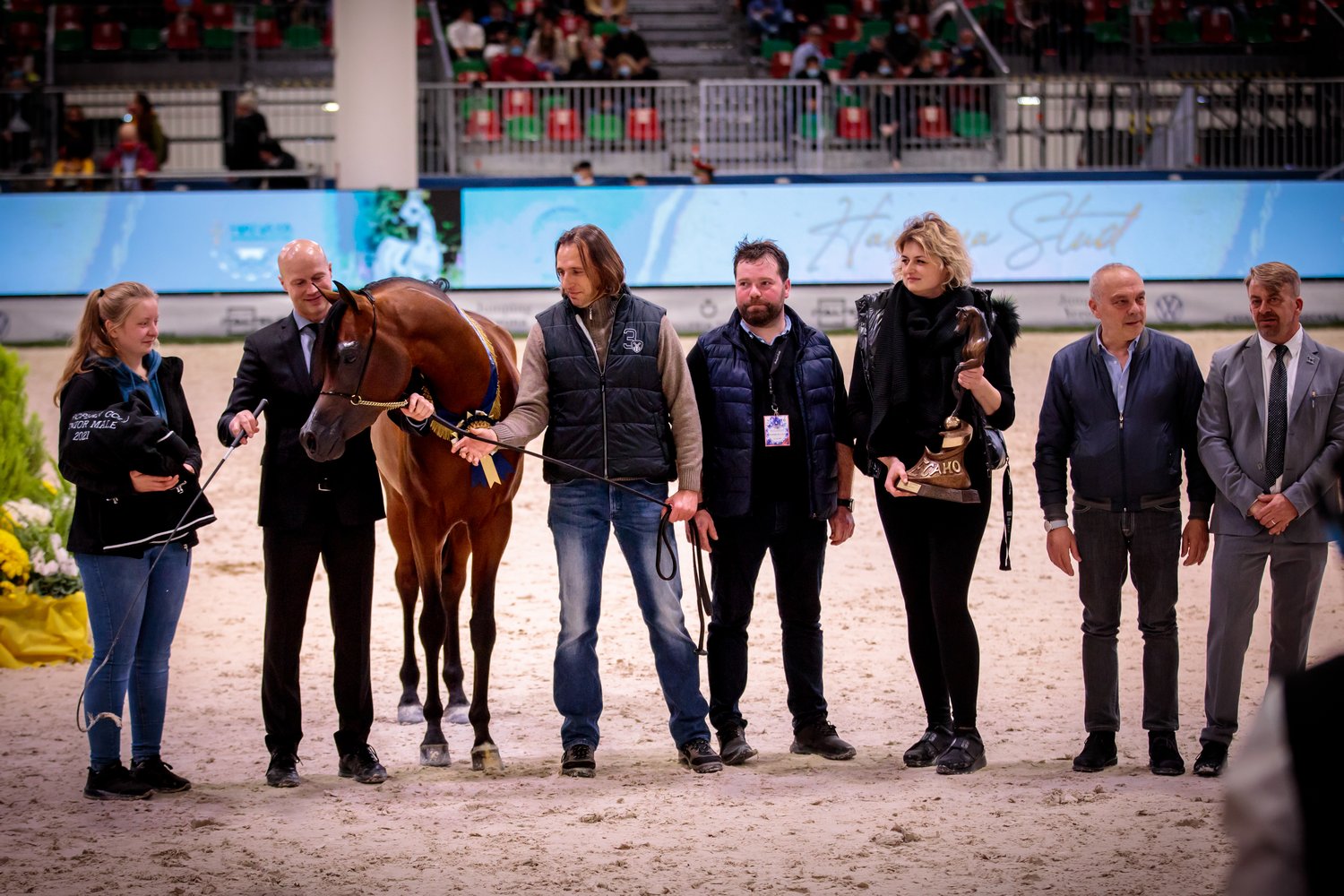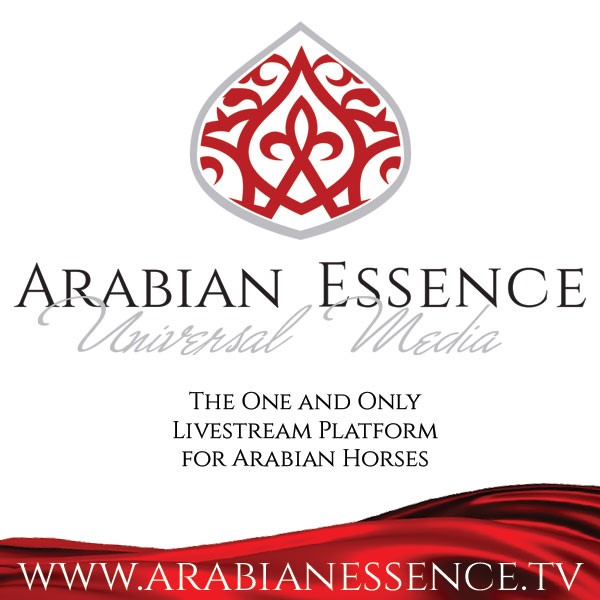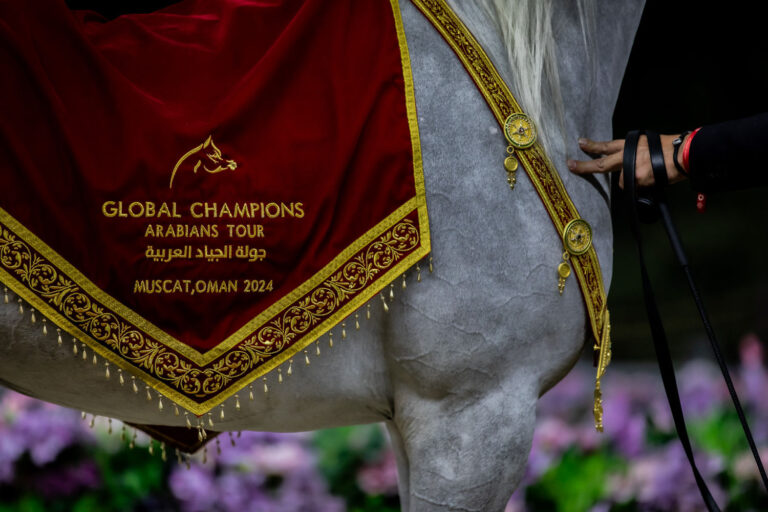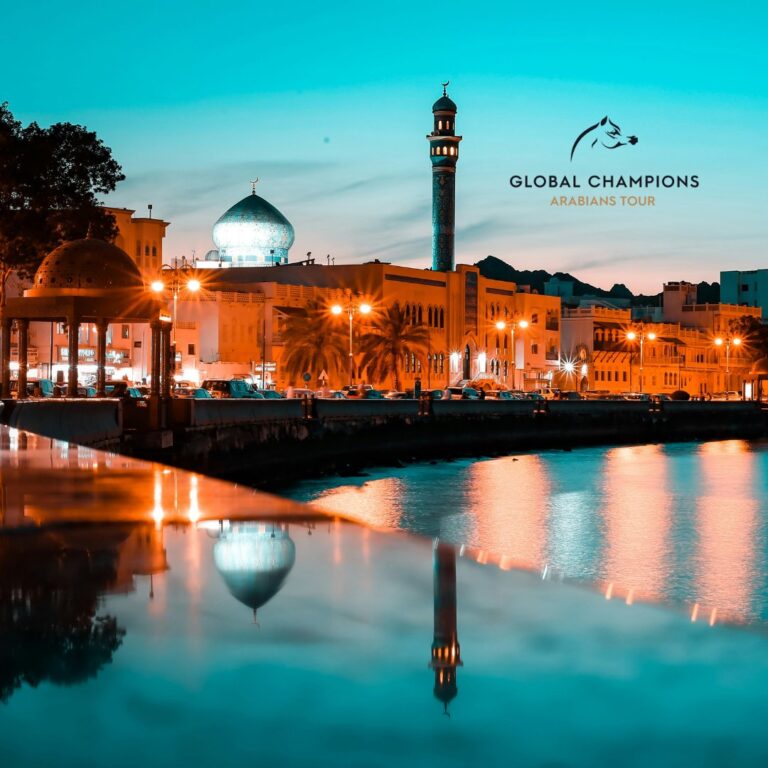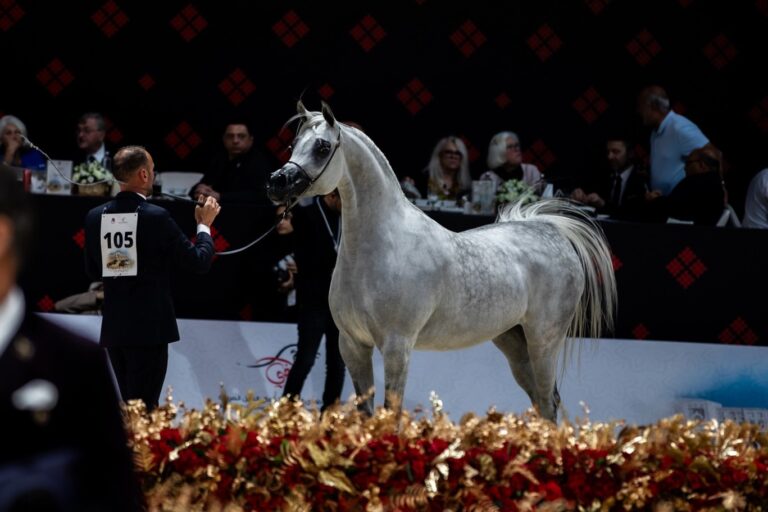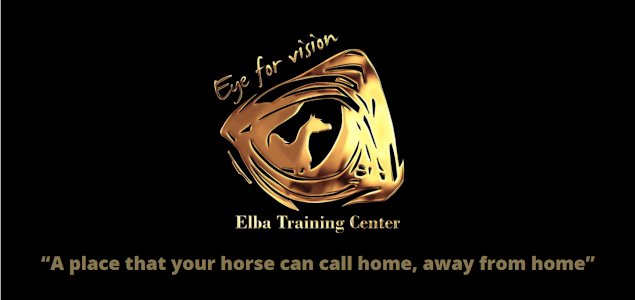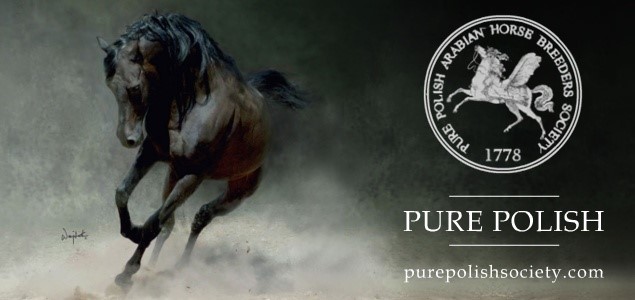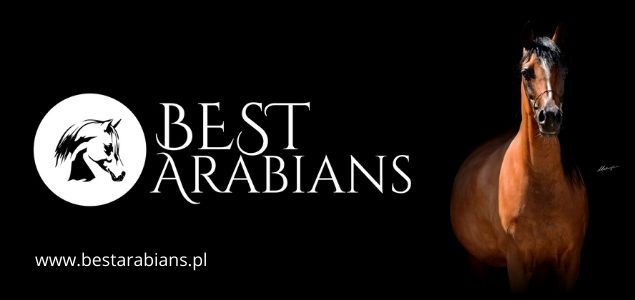On the weekend of November 13-14th in Verona – an Italian city known for the unhappy love of Romeo and Juliet – the European Arabian Horse Championship took place. Polish breeding was represented by 24 horses – 5 from Janów Podlaski (3 mares and 2 stallions), 8 from Michałów (6 mares and 2 stallions) and 11 from private breeders (9 mares and 2 stallions).
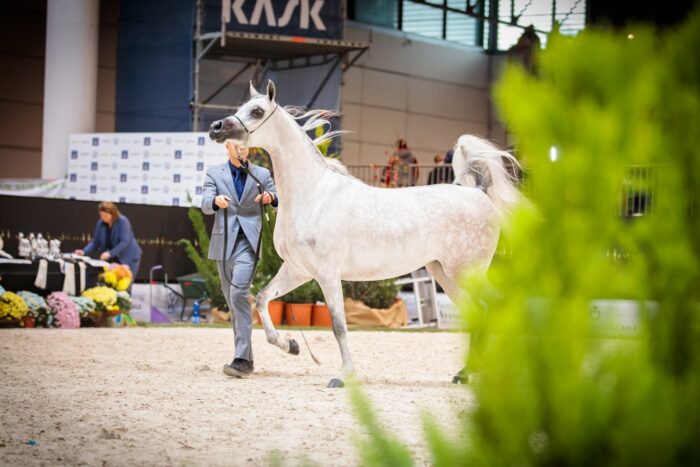
This time we can’t complain – Polish horses were definitely visible. It was especially noticeable in the age groups – the two-year-old, three-year-old, 4-6-year-old mares and two-year-old stallions classes were won by the representatives of Michałów Stud. They came from the 2018-2019 crops, i.e. from the breeding plan by Hanna Sztuka and Maciej Grzechnik (this is the answer to those who call the older Janów mares “Daughters of Marek Trela” – let’s be consistent, if that’s what we call them, call all of them!). Particularly El Esmera 2018 (Sahm El Arab – Esmeraldia, daughter of Emandoria) deserves special praise, who, apart from winning her class, also won the Junior Mare Championship, with her exceptionally short head and huge eye. And it is not a coincidentally successful pairing, because this stallion has also given such outstanding show horses as the stallion Pointer or filly Florissima, so a positive individual selection took place here. We remember how displeased everyone was at the use of this stallion. I personally am not a fan of the male line he represents, nor was I delighted with his conformation, but it must be objectively said that he mated very well with the mares assigned to him.
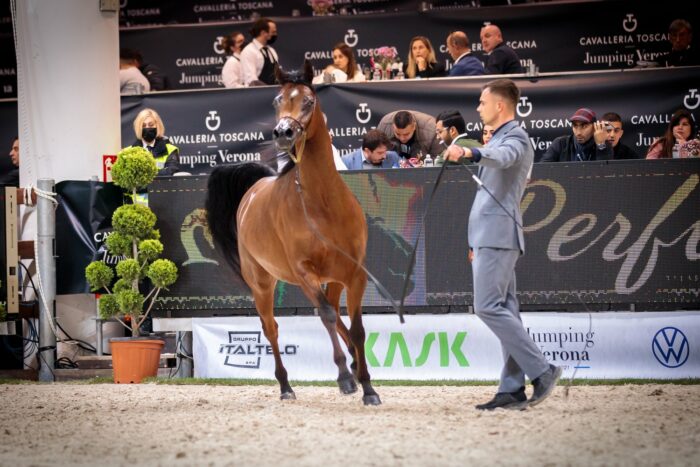
Of course, the same phenomenon occurred here that we have seen many times at the shows. Horses win their class with very high scores, but in the final competitions do not make it to the podium or receive a lower position – as if the judges changed their mind overnight. And so, the only participant of this show who, based on the lineage of the male and dam line, could be classified as “Pure Polish” – Michałów’s Protekcja 2017 (Ekstern – Pentra), who in 2019 received the award for the “Best Head of the Show”, and also has a top line like an “ironing board” – although she won her class with a high score of 92.80 points, she did not receive a medal in the finals. However, it should be remembered that in the championships Protekcja had very strong rivals.
On the other hand, the beautiful, dark bay stallion Ferrum 2019 (Morion – Ferrmaria), representing Michałów’s characteristic line of Forta, dry as a pepper, with a “table” top line and a chiselled head, who won both the Yearling and Junior Championships in Białka, Janów and Prague, in Verona won his class with a score of 92.70, but in the Championship he had to give way to a colt presented by a Polish private breeder, Waldemar Bąk – Vinci 2019 (Wadee Al Shaqab – Valencia Al Shaqab), who took second place in the class. This stallion is highly inbred to Marwan Al Shaqab – a 12.5% inbreeding rate as his parents are half-siblings. Achieving “exorbitant” show results is often associated with some risk. In this case, Waldemar Bąk, the owner of Salima Arabians, achieved a spectacular breeding success.
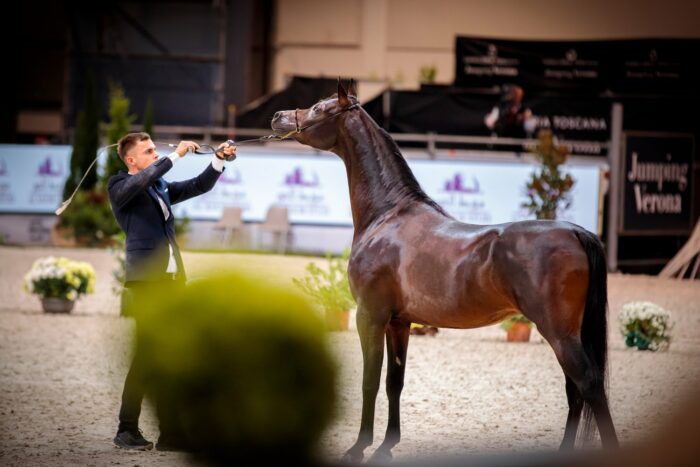
We have definitely moved away from times when private breeders shyly broke the monopoly of state studs, kept by force during the “communism” period, when even Roman Pankiewicz opted for separate shows for them, as it was supposed to last a long time before they could be of “state” quality. Separate shows were organized until 1999, and during 2000-2005, as part of the Junior Spring Show in Białka, a double ranking was used, for all horses and for private horses, to give equal chances. However, it soon turned out to be redundant, because in 2003 the year-old grey colt Girlan-Bey (Pesal – Gracja-Bis), bred and owned by Michał Bogajewicz, won the Polish Junior Stallion Championship and the title of Best In Show not only in the classification of private horses, but also in the general one. Today, such victories are no longer a phenomenon, on the contrary – more and more horses are exhibited by private breeders, who are also prosperous businessmen, so they can afford the best stallions and professional training of their horses, winning against the charges of the state studs.
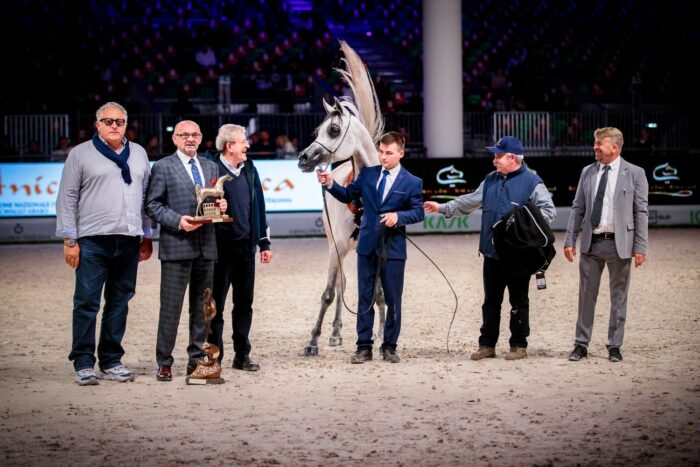
And so, in the Yearling Fillies Championship, the silver and bronze medals were won by: Psyche Apsara 2020 (Ghaith Al Zobair – Psyche Victoria), bred and owned by Chrcynno Pałac, as well as Bogini Róż PA 2020 (Kahil Al Shaqab – Black Rose), bred and owned by PPH Parys, the first being a daughter of Ekstern and the second being his granddaughter. In the Junior Mare Championship, Michałów mares (golden El Esmera and bronze El Medida) were separated by Melarosa GA 2019 (AV Cloud Dancer – Marwtyna), bred and owned by GA Rancho Artur Gibała, without a drop of Polish blood. So all three medals went to breeders and owners from Poland.
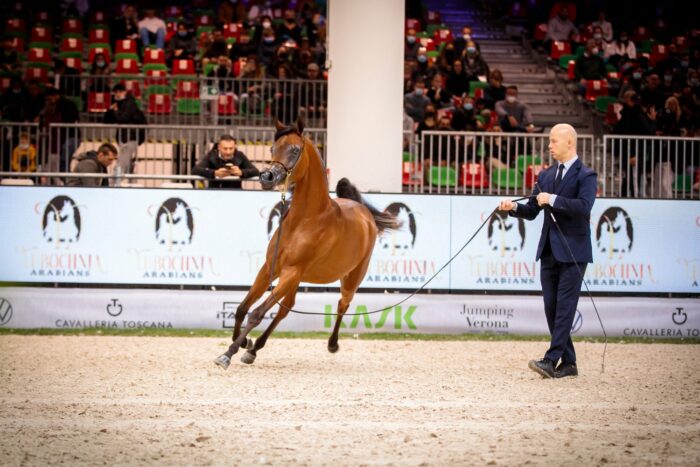
In the Senior Mare Championships, the first and third places were taken by Janów bred mares, which used to win in Polish colours, but were later exported – Primera 2009 (Eden C – Preria) and Alsa 2013 (Kahil Al Shaqab – Alameda), respectively.
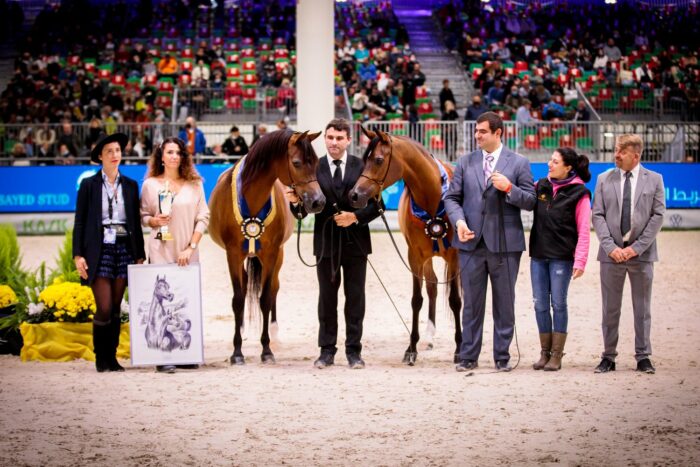
The Silver Champion of the Yearling Colts was El Draco RA 2020 (Morion – El Medisa), bred and owned by Regina Arabians, and in the senior stallions, although Janów used to be famous for its sires, even the current Polish Champion, Janów’s Paris 2014 (Kahil Al Shaqab – Palmeta), who brought a medal from almost every show since being a yearling, this time was only second in his class, and no Polish stallion took a medal. Of course, you have to take into account the different tastes of the judges and the changing form of the horses. And so, Janów’s Atakama 2015 (Empire – Atma), with a kilometre-long neck and great movement, reached the peak of her abilities at the age of 3, and now she had to be satisfied with sixth place in her class.
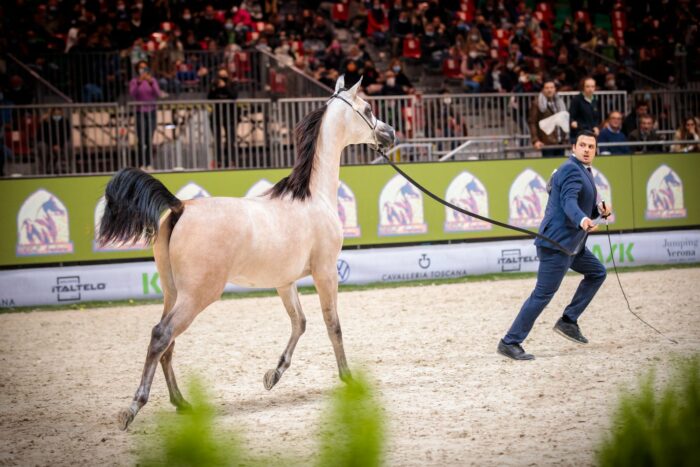
Summing up, it is a reason to be happy that horses in Polish hands are winning international competitions. It is a pity that 91.66% of this “Polish” representation comes from the “non-Polish” family (or, if you like, the male line) of Saklavi I, that is, the entire palette is flooded with one colour, at most in different shades.
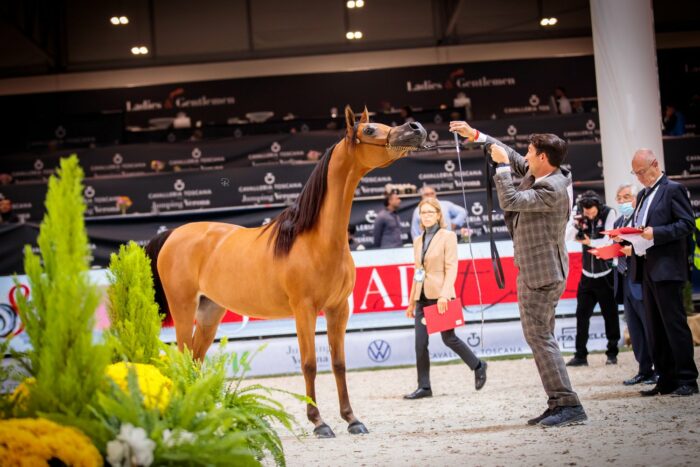
On the same weekend, on Friday and Sunday, another show was also held in the same Verona, the international B-rank Verona International Cup. I scrolled through the lists of participants of all ages of this show in search of some “Polish traces”. Out of 57 stallions and mares, I found 5 such traces. They were: SS Rawnag 2019 (Kahil Al Shaqab – ASH Ranya), fourth in the two-year-old fillies class and Juvanda OS 2007 (WH Justice – Shak Lavanda), winner of the seven-year-old and above mares class, as well as the Gold Champion of the Senior Mares. They both belong to the newly established, dynamically developing Lubochnia Arabians stud, located near Gniezno. Winning the championship of such a show is an unquestionable success and the owners deserve congratulations.
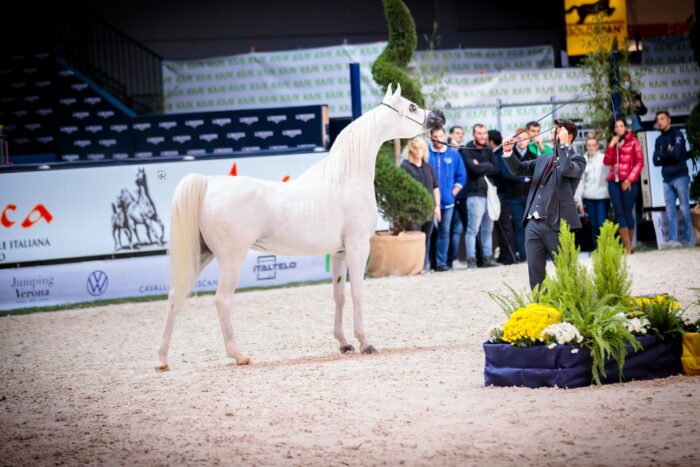
The three remaining “Polish traces” are mares: Exposita KA 2012 (QR Marc – Ekina), fourth in the 7-year-old and above mares class; the colt Wiktorino 2008 (Khidar – Wieruszka), fourth in the 7-year-old and above stallions class; and 3-year-old class Persifada (Empire – Panna Cotta). These horses are the descendants of mares purchased in Poland – I remember Białka’s Ekina 2004 (Ekstern – Eklera), an exceptionally charming, small golden chestnut with a tiny head!
The horses participating in the Verona International Cup show are owned by citizens of various Arab or European countries. Their sires are mostly stallions well known in Poland: Kahil Al Shaqab, QR Marc, Wadee Al Shaqab, Invictus, RFI Farid, Ajman Moniscione, Shanghai E.A. or WH Justice, used eagerly in the show breeding direction. So we have full “globalization” – our main export asset, which was the separateness of Polish Arabians, lay in ruins. Some still indicate that the origin of our horses is distinguished by dams coming from strong, well-established Polish dam lines. However, this will also soon become obsolete, as more and more mares by foreign sires are incorporated into breeding. And then what? Who will come to the auction to buy more expensively what they have at home, in the United Arab Emirates or Israel?
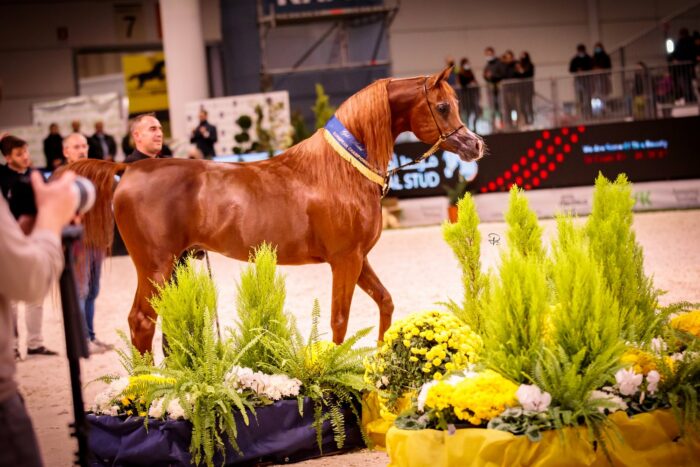
The exhibitors in the Verona International Cup are private breeders who have about ¾ of the population in Poland, and at the European Championships they made up almost half of the Polish team. Such breeders often invest considerable money in the maintenance of their horses, special nutrition, the best treatment if necessary, breeding and professional training. Therefore, they hope to achieve results as soon as possible and usually do not care about any “historical mission”. On the other hand, state breeding centres, especially those with a long history and tradition, should primarily cultivate their function as a gene bank so that they can be used, for example, in the event of a change in fashion. However, such a function cannot be performed by companies forced to show revenues, because horses are a species with a slow rotation of generations, and therefore sometimes bring profit, and sometimes loss. Farming in the “from auction to auction” mode brings deplorable results in the long run.


